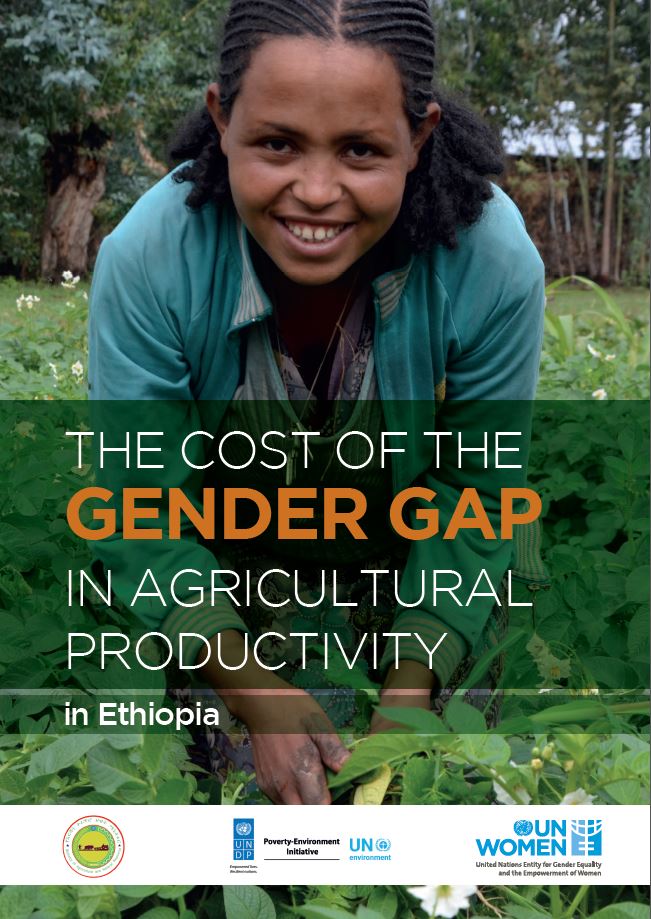
The cost of Gender Gap in agricultural productivity in Ethiopia

The study presents the cost of the gender gap in agricultural productivity in Ethiopia. The findings of this report are striking, and send a strong signal to policy makers in Ethiopia as well as development partners that closing the gender gap is smart economics. Consider this: That increasing GDP by closing the gender gap in agricultural productivity has the potential to lift as many as 1,050,000 people out of poverty in Ethiopia. This Report helps to lay the ground-work for deeper investigation as to where to invest for the most cost-effective policies. Our analysis finds that women’s lesser capacity to purchase pesticides, herbicides and fungicides is an important constraint contributing to the gender gap in farm crop productivity in Ethiopia.
Ethiopia's second Growth and Transformation Plan 2015/16 – 2019/20 places women farmers at the center of the country's development process and its efforts to meet the Sustainable Development Goals. Some 47 per cent of the rural labour force are women, and the figure is rising over time. Yet women farmers have been found to be less productive than male farmers. In 2014 the World Bank and ONE published Levelling the field: improving opportunities for women farmers in Africa which contained the first estimate of the gender gap in agricultural productivity in Ethiopia. There, the gender gap in agricultural productivity—measured by the value of agricultural produce per unit of cultivated land—was found to be 24 percent, after accounting for plot size and regional variation across the country. This gap existed because women frequently had unequal access to key agricultural inputs such as land, labor, knowledge, fertilizer, improved seeds and water. The fact that a gender gap was identified suggested that agricultural policy strategies and programs under the first Growth and Transformation Plan 2010/11 – 2014/15 had been unable to comprehensively address the underlying constraints facing women farmers. Moreover, low agricultural productivity tends to reduce per hectare yields and leads to more intense farming—resulting in overcultivation, soil erosion, and land degradation. These in turn further undermine agricultural productivity and environmental sustainability. The evidence presented in this Report addresses this situation and offers guidance to Ethiopian policy makers on how to increase agricultural productivity and economic growth, strengthen food security, support poverty reduction and environmental sustainability, empower women farmers, and facilitate the structural change that is the objective of the Growth and Transformation Plan 2015/16 – 2019/20.
View/ download: English